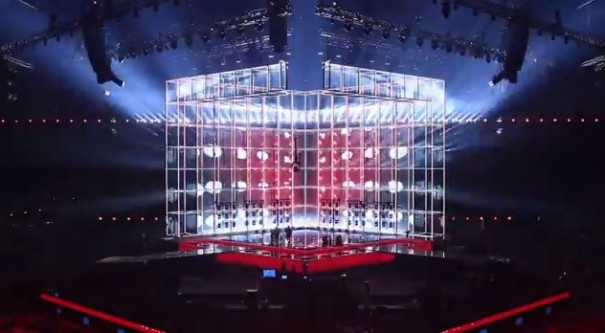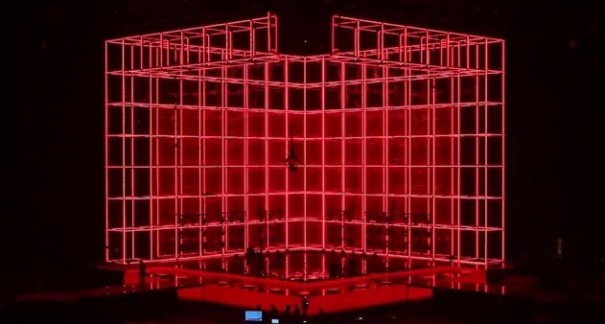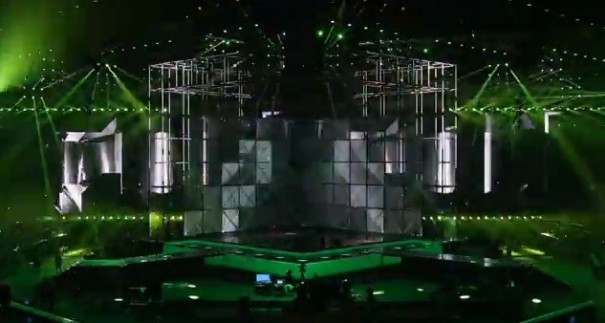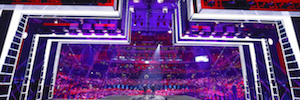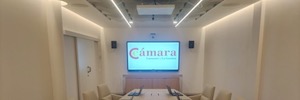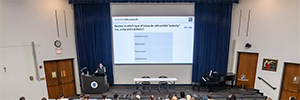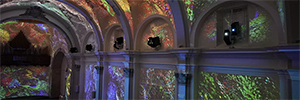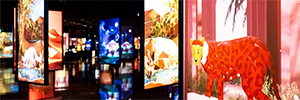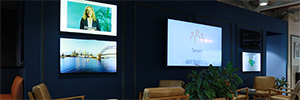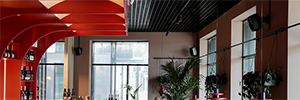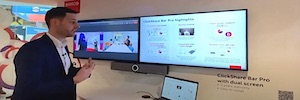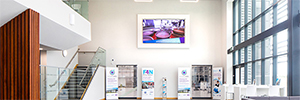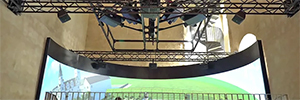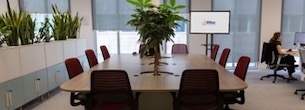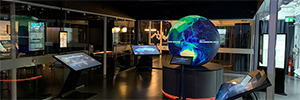Denmark turns the Eurovision Song Contest into one of the most innovative audiovisual shows of the year
the 59 Eurovision Song Contest, held at the B&W Hallerne Arena, former shipyards in the capital of Denmark, has staged one of the largest audiovisual shows in the history of this festival, where projection systems, 3D technology, LED lighting and stunning light effects, Sound and pyrotechnics have been the great technological protagonists.
The latest audiovisual technology at the service of the show, in this case the Eurovision Song Contest 2014 celebrated the past 10 May in Copenhagen, has not left viewers indifferent, fans and attendees of this European musical event, whose scenario has been one of the most innovative in its history.
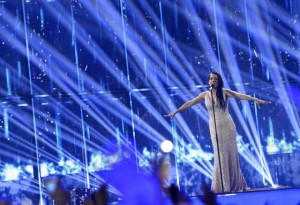 The former Danish shipyards, today converted into the B&W Hallerne Arena, became the night of the 10 of May in an unprecedented technological display whose result has been a brilliant audiovisual spectacle, in which 3D technology configured in a huge LED cube was configured in each performance of the contestants, As happened during the performance of the Spanish representative, Ruth Lorenzo, With a visual effect of rain as an element projected on the background of the set and overprinted on the image itself in emission was impressive.
The former Danish shipyards, today converted into the B&W Hallerne Arena, became the night of the 10 of May in an unprecedented technological display whose result has been a brilliant audiovisual spectacle, in which 3D technology configured in a huge LED cube was configured in each performance of the contestants, As happened during the performance of the Spanish representative, Ruth Lorenzo, With a visual effect of rain as an element projected on the background of the set and overprinted on the image itself in emission was impressive.
From the point of view of projection, the organization of the festival returned to opt one more year for the technology of the Belgian firm Barco, playing as it happened in the last edition a prominent role the HDQ-2K40 projector, with a total of sixteen units, that were combined with an equal number of HDX-W20 projectors to display the brightest images.
LED Technology
The Eurovision stage 2014 centered the show on a large LED cube (from 20×35 meters), composed of 120 modules with a special LED surface for projection, which allowed the display of images or animations. As in the edition 2013, MediaTec was the company in charge of the integration of Barco's technology in this configuration.
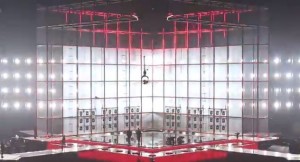 Designed by Claus Zier, The stage had 20 meters high and 1.200 square meters, making it the largest to date built in Denmark. For the lifting of the structure, reminiscent of the old shipyards, were used 40 tons of steel lined with 3.000 fluorescent lights, 730 LED, as well as an acrylic polycarbonate screen for the projection of the images in each of the performances. It is noteworthy that the floor was sensitive to touch., so that images from Barco projectors could interact with artists as they walked through it..
Designed by Claus Zier, The stage had 20 meters high and 1.200 square meters, making it the largest to date built in Denmark. For the lifting of the structure, reminiscent of the old shipyards, were used 40 tons of steel lined with 3.000 fluorescent lights, 730 LED, as well as an acrylic polycarbonate screen for the projection of the images in each of the performances. It is noteworthy that the floor was sensitive to touch., so that images from Barco projectors could interact with artists as they walked through it..
As for the audio, in B&W Hallerne Arena, a PA system of more than 11.400 kilos next to 150 giant balloons designed with 60.000 square meters of fabric allowed for clear, high-quality sound throughout the venue, with an echo of just three seconds. Twenty-two cameras were used during the gala.
You liked this article?
Subscribe to our RSS feed And you won't miss anything.
• section: audio, Case studies, Digital signage, display, Events, production, projection



